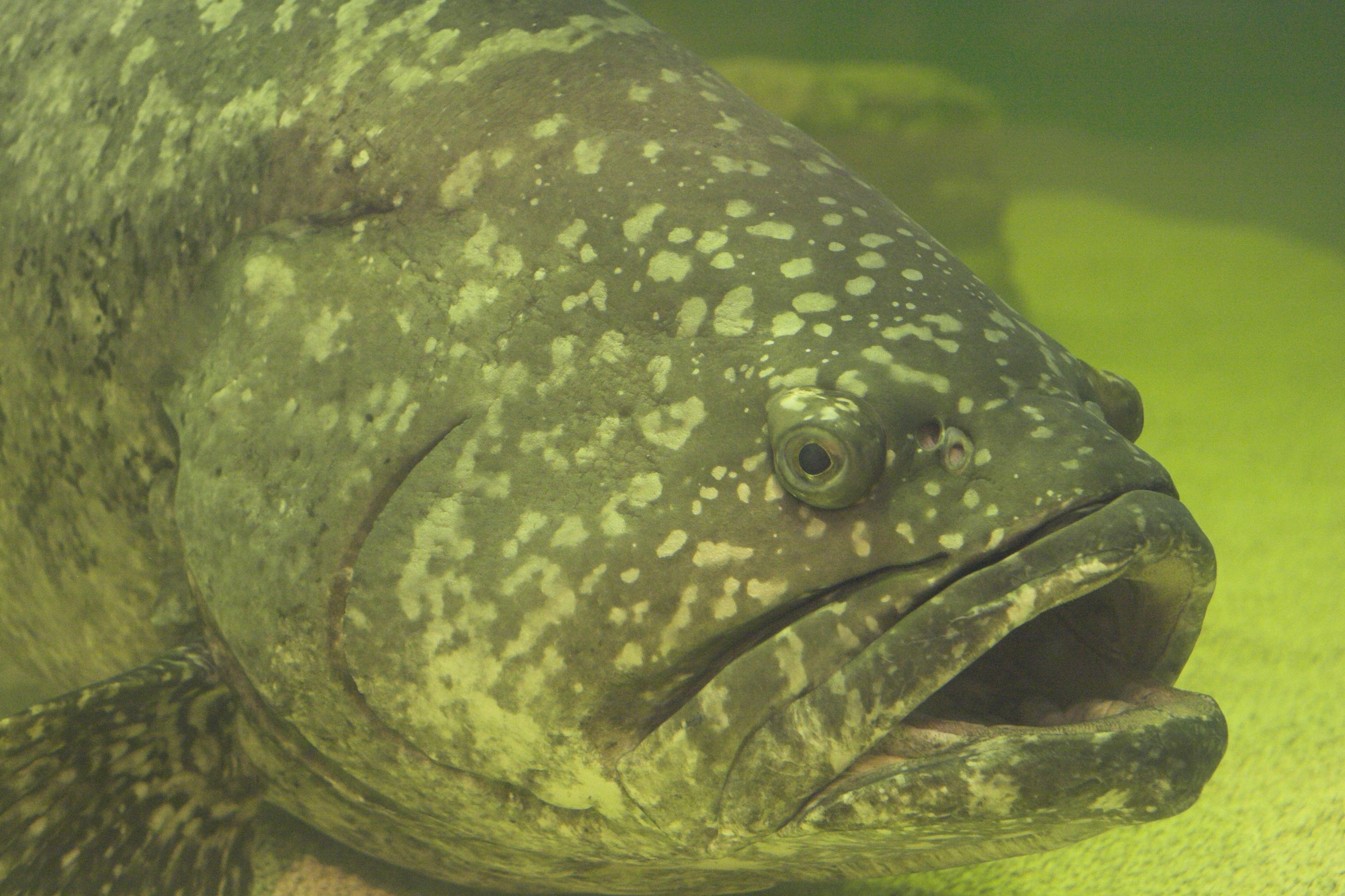- Atlantic Goliath grouper
Taxobox
name = Atlantic Goliath grouper
status = CR
status_system = iucn2.3
status_ref = IUCN2007|assessors=Chan Tak-Chuen & Padovani Ferrera|year=2006|id=7857|title=Epinephelus itajara|downloaded=11 May 2006 Database entry includes a range map and a lengthy justification of why this species is critically endangered]
trend = unknown

image_width = 250px
regnum =Animal ia
phylum = Chordata
classis =Actinopterygii
ordo =Perciformes
familia =Serranidae
genus = "Epinephelus "
species = "E. itajara"
binomial = "Epinephelus itajara"
binomial_authority = (Lichtenstein, 1822)The Atlantic goliath grouper or itajara ("Epinephelus itajara") is a large saltwater fish of thegrouper family. It was formerly known as thejewfish ; however, in 2001 theAmerican Fisheries Society made the decision to change the name to the more considerate "goliath grouper". [Citation
last = Tompkins
first = Shannon
title = Strange things happen in threes
newspaper = Houston Chronicle
pages = Sports 2; Page: 20
year = 2001
date = 05/20/2001
url = http://www.chron.com/CDA/archives/archive.mpl?id=2001_3306097] It is a cousin of thePacific Goliath grouper .The goliath grouper is found primarily in shallow tropical waters among
coral and artificial reefs at depths of up to 165 feet (50 m). Their range includes theFlorida Keys , theBahamas , most of theCaribbean , and practically all of theBrazil ian coast, where they are known as mero. On some occasions it is caught in New England off Maine and Massachusetts but it is not that common. In the easternAtlantic Ocean , it occurs from Congo toSenegal .Young grouper may live in
brackish estuaries, canals andmangrove swamps, unusual behavior among grouper.They may reach extremely large sizes, growing to lengths of 8.2 feet (2.5 m) and can weigh as much as 800 pounds (363 kg). In Florida, the largest hook and line captured specimen weighed 680 pounds (309 kg). They are usually around 400 lb when mature. Considered of fine food quality, the goliath grouper were a highly sought after quarry for fishermen of all types. The goliath grouper's inquisitive and generally fearless nature make it a relatively easy prey for spear fishermen. They also tend to spawn in large aggregations returning like clockwork to the same locations making them particularly vulnerable to mass harvesting. Until a harvest ban was placed on the species, the species was in rapid decline. The goliath grouper is totally protected from harvest and is recognized as a critically endangered species by the
World Conservation Union (IUCN). The U.S. began protection in 1990 and the Caribbean in 1993. The species' population has been recovering since the ban, however with the fish's slow growth rate it will take some time for populations to return to their previous levels.Goliath grouper eat
crustacean s, otherfish ,octopus es and youngsea turtles . Grouper are preyed upon by large fish such asbarracuda ,moray eel s and largeshark s.Goliath grouper are believed to be protogynous
hermaphrodite s, with individuals first maturing as females and only some large adults becoming males. Mostgrouper follow this pattern, but it has not yet been verified for the Goliath. [http://www.flmnh.ufl.edu/fish/gallery/descript/goliathgrouper/goliathgrouper.html Florida Museum of Natural History] In fact, Bullock et al. found that males could be sexually mature at smaller sizes (~1150mm) and younger ages (4-6 years) than females (~1225mm and ~6-8 years). [Bullock et al. (1992) Age, Growth and Reproduction in the Eastern Gulf of Mexico U.S. Fishery Bulletin 90(2):243-249 retrieved April 8, 2008 from http://myfwc.com/Marine/grouper/goliath_grouper/reports.htm]References
External links
*FishBase_species|genus=Epinephelus|species=itajara|year=2004|month=October
* [http://www.flmnh.ufl.edu/fish/Gallery/Descript/GoliathGrouper/GoliathGrouper.html Florida Museum of Natural History description] including alternate names
* [http://www.staugustinelighthouse.com/lamp_shipwreck_florida.php The 1918 wreck of the dredge vessel Florida is home to several goliath grouper; this webpage by the Lighthouse Archaeological Maritime Program has photos and video clips]
*eol|17052115
Wikimedia Foundation. 2010.
